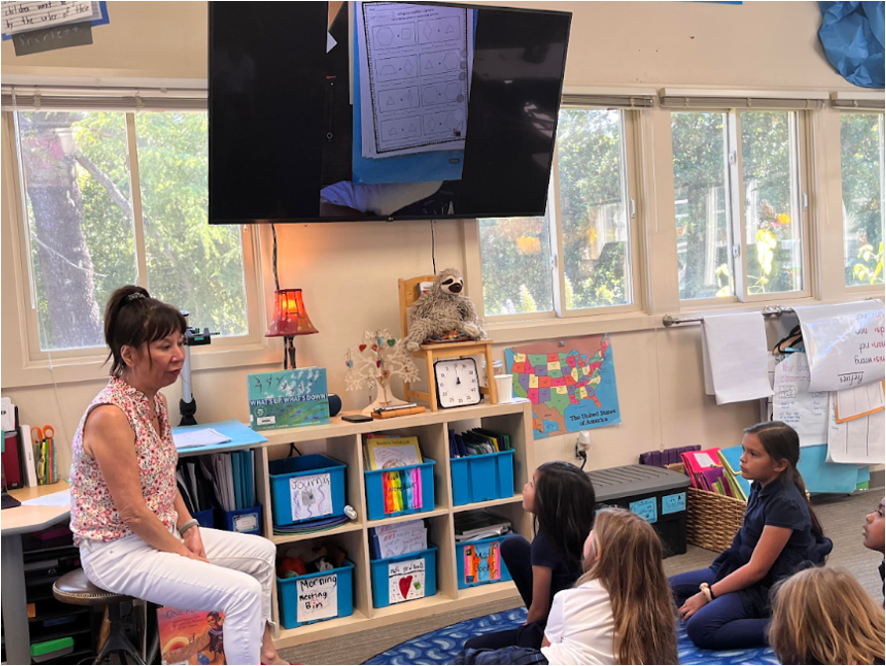“I think I know what ‘PM’ means, it maybe means ‘prepare for midnight!’”
2nd Grade Mathematicians are learning all about time. Reading an analog clock at positions of every 5 minutes, practicing language like “quarter past”, “quarter til”, “half past,” and thinking about cycles in the 24 hour day. This week, I joined as students were discussing the patterns of ones and tens of minutes that happen over the course of two hours in an afternoon.
One student wrote out times on the board, as his classmates counted together, “3:40, 3:45, 3:50…” They observed the numbers and discussed their noticings about how the hour numeral, the one-minute numeral, and the ten-minute numeral change through two hours.
“The middle number actually also goes up by 1s,” one student noticed. “It’s like a cycle; it goes up from 0, 1, 2, 3, 4, 5, but then it starts over.”
It’s like a cycle; it goes up from 0, 1, 2, 3, 4, 5, but then it starts over.
These Number Talks provide practice for analyzing how clocks count by ones and tens, but how they differ from other counting in that they reset every 60 minutes. Students also discussed norms and language about time, like the meaning of “am” and “pm”, and why we say “quarter til”– what’s it a quarter of? Students connected the clock cycle to other cycles they know about, and made cultural connections to the way time is expressed in other countries and languages they know. They created individual timelines showing the hours of a full day/night cycle, labeling times when they typically wake, sleep, and eat. Their teacher shared the origin“am” and “pm” (Latin for ante meridiem and post meridiem, or before / after midday). Students honed in on the silliness of saying “12pm” to refer to noon given the definition of pm.
One child said, “but when it’s exactly midday, then it doesn’t make sense actually to say it’s ‘pm’ because it’s not pm until 1 second after 12:00. It’s not ‘after’ until after… So really that’s just ‘12M.’” Precisely!

